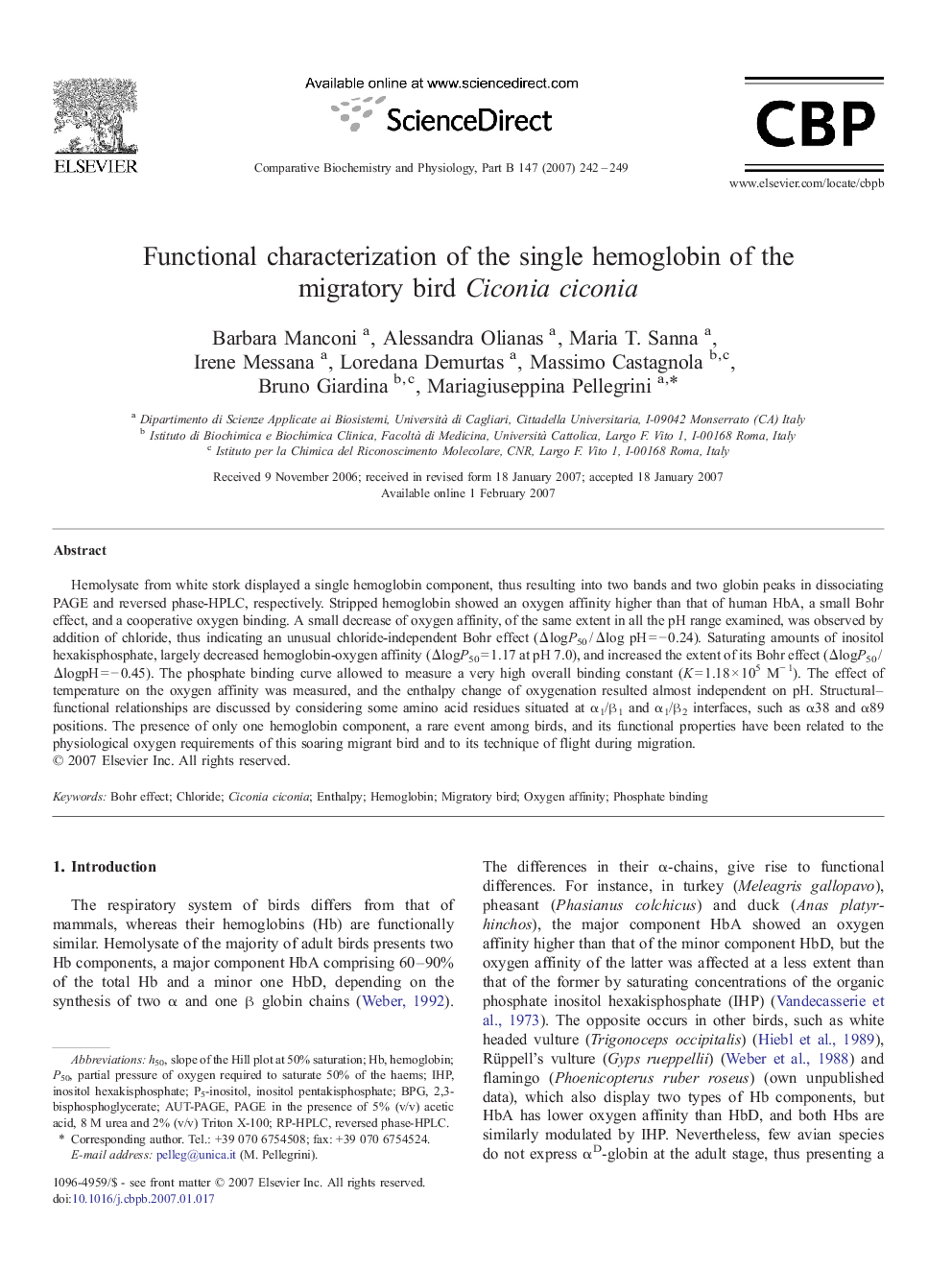| Article ID | Journal | Published Year | Pages | File Type |
|---|---|---|---|---|
| 1976103 | Comparative Biochemistry and Physiology Part B: Biochemistry and Molecular Biology | 2007 | 8 Pages |
Abstract
Hemolysate from white stork displayed a single hemoglobin component, thus resulting into two bands and two globin peaks in dissociating PAGE and reversed phase-HPLC, respectively. Stripped hemoglobin showed an oxygen affinity higher than that of human HbA, a small Bohr effect, and a cooperative oxygen binding. A small decrease of oxygen affinity, of the same extent in all the pH range examined, was observed by addition of chloride, thus indicating an unusual chloride-independent Bohr effect (ÎlogP50 / Îlog pH = â 0.24). Saturating amounts of inositol hexakisphosphate, largely decreased hemoglobin-oxygen affinity (ÎlogP50 = 1.17 at pH 7.0), and increased the extent of its Bohr effect (ÎlogP50 / ÎlogpH = â 0.45). The phosphate binding curve allowed to measure a very high overall binding constant (K = 1.18 Ã 105 Mâ 1). The effect of temperature on the oxygen affinity was measured, and the enthalpy change of oxygenation resulted almost independent on pH. Structural-functional relationships are discussed by considering some amino acid residues situated at α1/β1 and α1/β2 interfaces, such as α38 and α89 positions. The presence of only one hemoglobin component, a rare event among birds, and its functional properties have been related to the physiological oxygen requirements of this soaring migrant bird and to its technique of flight during migration.
Keywords
Related Topics
Life Sciences
Biochemistry, Genetics and Molecular Biology
Biochemistry
Authors
Barbara Manconi, Alessandra Olianas, Maria T. Sanna, Irene Messana, Loredana Demurtas, Massimo Castagnola, Bruno Giardina, Mariagiuseppina Pellegrini,
